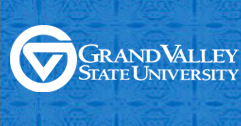HPV Vaccine Awareness and Acceptance: Mass Media Influence on the Perceptions of Freshman College Students
Location
Hager-Lubbers Exhibition Hall
Description
PURPOSE: College freshmen in fall 2013 were the first group of adolescent females targeted by the proposed Gardasil® vaccine guidelines in 2006 for 11-12 year old girls, and the first group of adolescent males targeted in 2009 for 15-16 year old boys. The aim of this study was to evaluate this population’s education about HPV/Gardasil® and determine if the media had an increased role in their reception of HPV knowledge and if the media influenced their reception of the HPV vaccine, Gardasil®. METHODS: One thousand randomly selected 18-19 year old freshmen students at Grand Valley State University were invited to participate in this cross-sectional quantitative pilot study using an on-line, anonymous questionnaire. Pearson Chi-Square tests, significance of the difference between two independent proportions test, score development, independent t-tests, and linear regression were tools used to analyze the data. RESULTS: One hundred forty six students completed the survey. 68% of respondents reported obtaining HPV and Gardasil® related information from the media, and 37% of respondents felt that the information presented in the media was not believable. Respondents reported receiving the most believable HPV-related information from health education classes and healthcare providers. Individuals who received the vaccine scored significantly higher on the knowledge based questions (M=3.64, SD=0.586, p-value=0.000) than those who did not receive the vaccine (M=2.45, SD=1.234. CONCLUSION: The results of this study suggest that regardless of the amount of interaction students had with healthcare providers and/or the media, it did not affect their overall knowledge of HPV or Gardasil.
HPV Vaccine Awareness and Acceptance: Mass Media Influence on the Perceptions of Freshman College Students
Hager-Lubbers Exhibition Hall
PURPOSE: College freshmen in fall 2013 were the first group of adolescent females targeted by the proposed Gardasil® vaccine guidelines in 2006 for 11-12 year old girls, and the first group of adolescent males targeted in 2009 for 15-16 year old boys. The aim of this study was to evaluate this population’s education about HPV/Gardasil® and determine if the media had an increased role in their reception of HPV knowledge and if the media influenced their reception of the HPV vaccine, Gardasil®. METHODS: One thousand randomly selected 18-19 year old freshmen students at Grand Valley State University were invited to participate in this cross-sectional quantitative pilot study using an on-line, anonymous questionnaire. Pearson Chi-Square tests, significance of the difference between two independent proportions test, score development, independent t-tests, and linear regression were tools used to analyze the data. RESULTS: One hundred forty six students completed the survey. 68% of respondents reported obtaining HPV and Gardasil® related information from the media, and 37% of respondents felt that the information presented in the media was not believable. Respondents reported receiving the most believable HPV-related information from health education classes and healthcare providers. Individuals who received the vaccine scored significantly higher on the knowledge based questions (M=3.64, SD=0.586, p-value=0.000) than those who did not receive the vaccine (M=2.45, SD=1.234. CONCLUSION: The results of this study suggest that regardless of the amount of interaction students had with healthcare providers and/or the media, it did not affect their overall knowledge of HPV or Gardasil.
